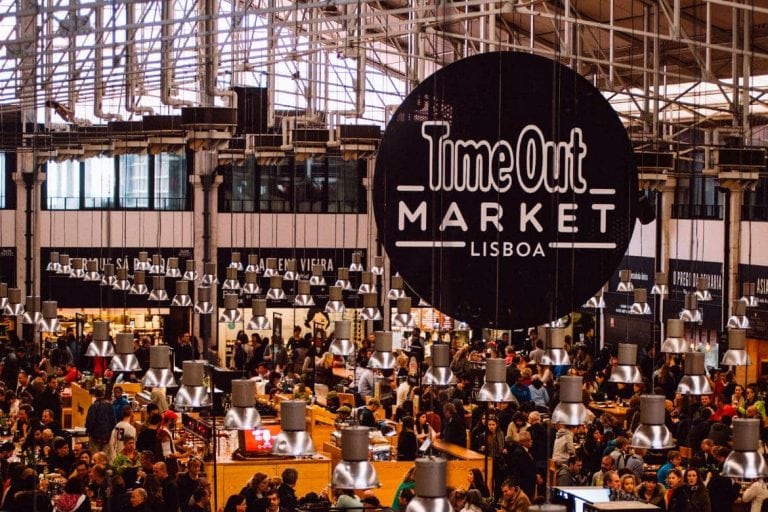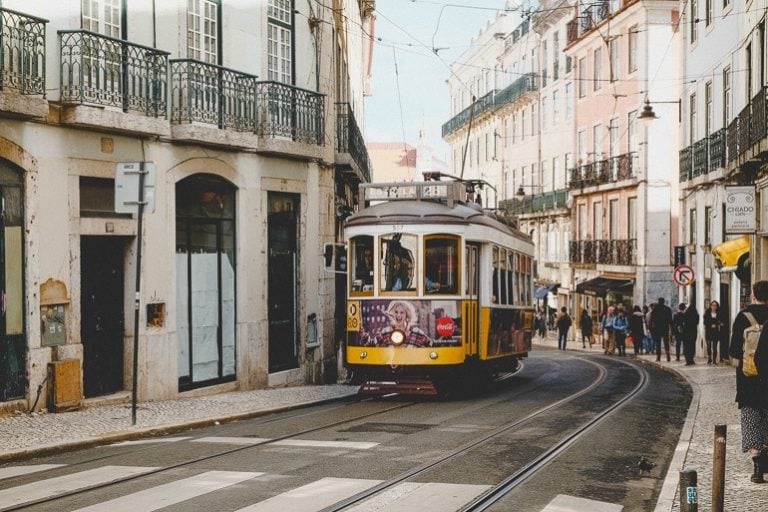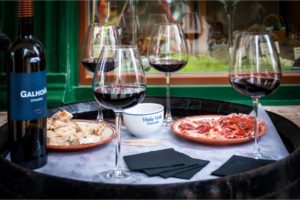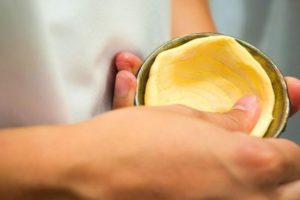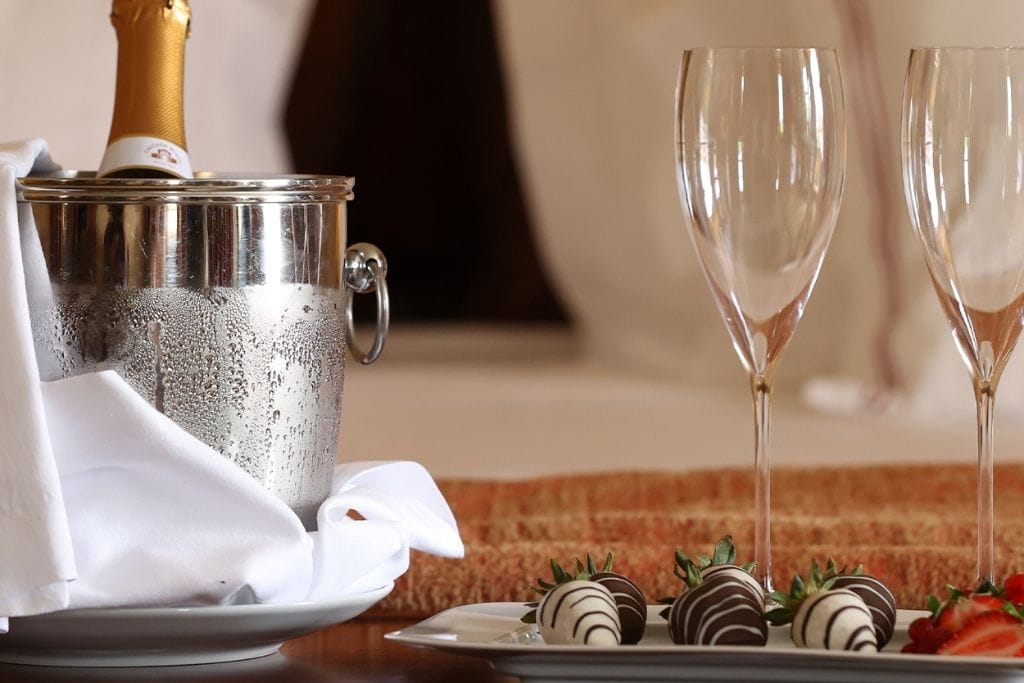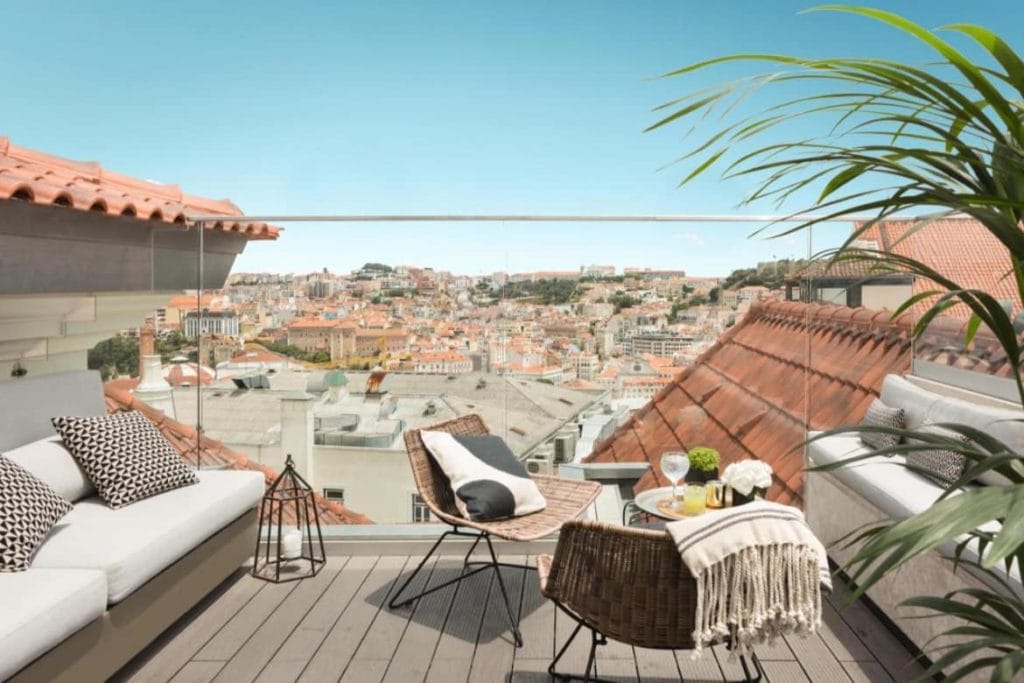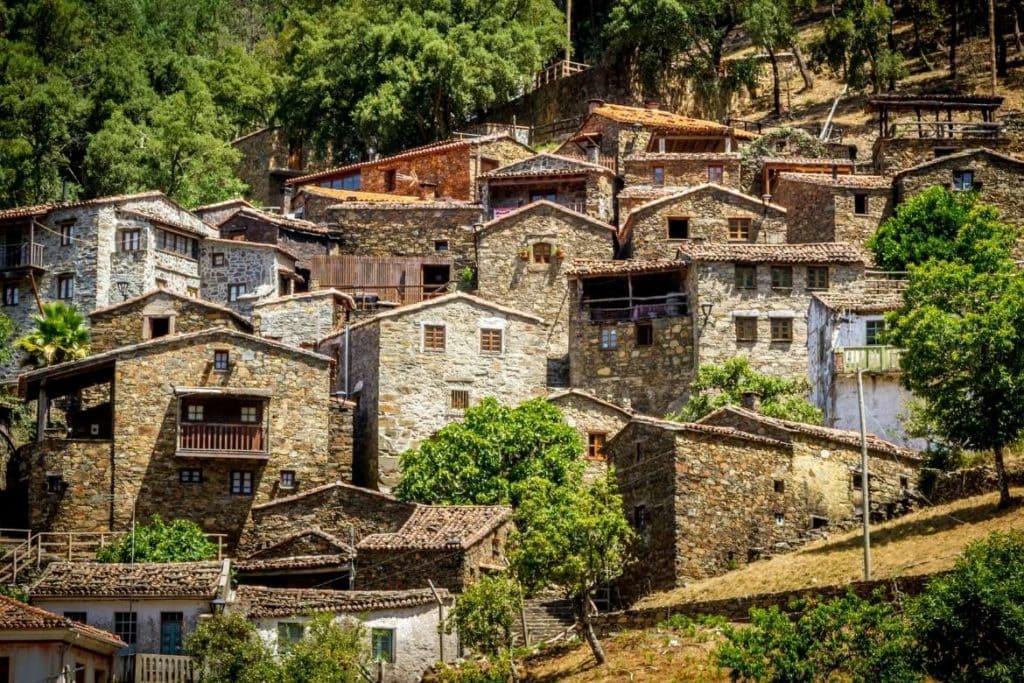Between vintage and modern
Lisbon has never been more fashionable than now. That picture of an ancient city is long gone. For some years now, the Portuguese capital has shown a new face, authentic and modern. In the wake of these changes, you now find unique museums, restaurants, hotels, shops, fairs… all without losing the traditional Portuguese style.
It was a matter of time before Lisbon managed to win back the hearts of tourists. Today, the capital is among the favorite destinations of travelers from all over the world. It is no wonder, with so many attractions and leisure options, Lisbon is a full plate for any itinerary. In this Lisbon travel guide, you will find tips on what to do, where to eat, the best regions to stay, and much more.
How to plan a trip to Lisbon
Essential information

General
Information
Capital of Portugal.
Language: Portuguese.
Distances: Porto (313km), Coimbra (204km), Faro (278km).
Lisbon comes from the expression Alis Ubbo, which in Phoenician means “safe harbor.”
Curiosity: It is known as the “city of seven hills,” and the residents are called “alfacinhas.”
Transportation
How to get there
Humberto Delgado International Airport (LIS) receives daily flights from several world capitals and is located only 6 km from the center of Lisbon. From there, you can take a transfer, bus, subway, or taxi/transport by application to the city center. If you’re in a different city, you can easily travel to Lisbon by train or bus.
In the city
Getting around
If you don’t mind walking, Lisbon is a city that can easily be explored on foot and by public transport. If that is your case, it is worth buying the Lisboa Card, which gives you access to bus, train, subway, and elevators – and still get entrances to museums and train trips to Sintra and Cascais. Cable cars (electric trams) and tuk-tuks are also an option. For those going by car, parking is easy (and cheap).
Agenda
Best time to go
The climate in Lisbon is pleasant all year round. From December to February, it’s a bit cold. Temperature is not negative, but you may get a little rain. The heat comes between June and September, along with the (many) tourist groups that invade the city. It is also the most expensive time to visit. October, November, March, April, and May are milder and have more friendly prices.
Lisbon map
Best areas and regions

Baixa: Well Located
The Baixa houses the largest concentration of hotels per square meter in Lisbon. For this reason, it has options for all tastes (and all budgets). Even though it’s right in the tourist buzz, you find reasonable prices and good value for your money. It has easy access to the river, restaurants of all kinds, and the subway.
Príncipe Real: Trendy and Cool
It is the “fashion district” of Lisbon. For some time now, it has gained several of the most famous addresses in the city. You can find good hotels and many properties and rooms for rent. Staying in this region, you’ll have trendy shops and restaurants within walking distance. On the negative side, it’s an area of slopes where the ups and downs are inevitable. Better for those who don’t bother to walk and want to explore a less tourist side of the town.
Chiado: A bit of everything
The region is well served with many restaurants, shops, and sights. No wonder Chiado is considered one of the best areas to stay in Lisbon. From there, you can readily explore the entire central region on foot – not to mention that it’s on the side with the best public transport in the city. Despite the flow of tourists, you can get a taste of a typical Lisbon neighborhood.
Alfama: To go back in time
Alfama remains one of the best places to discover the more traditional side of Lisbon. There are alleys full of tiles, houses of fado, balconies with clotheslines… The hotels have a very modern vibe, despite being in old buildings. The good thing is that almost everything is just minutes away from the central region.
Best hotels and accommodation
Where to stay in Lisbon

Favorites
Things to see
Lisbon in frames
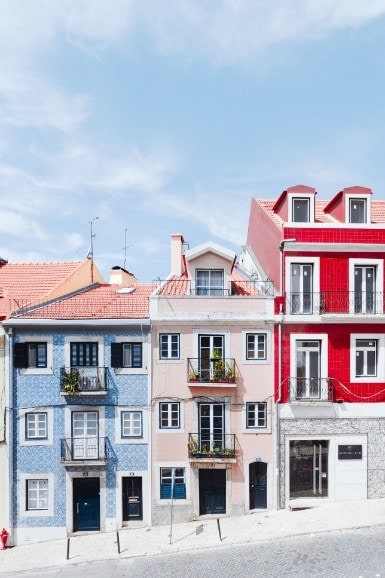

Lisbon has the feel of a big city, but without leaving aside the charm of the countryside. When walking through the streets, you can find modern and award-winning restaurants and then, right after, find a small tavern only known by locals. Be sure to notice the cable cars, the stone sidewalks, the neighborhood groceries…
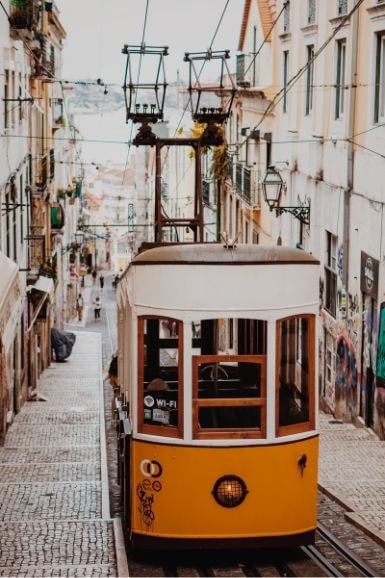
Gastronomy
What to eat in Lisbon
The gastronomic scene in Lisbon has recently been revamped. The taverns, local markets, and patisseries are still there – of course – but now they share space with a bunch of brand new restaurants with signature dishes and bold proposals.
If you look further, you see that Lisbon cuisine goes far beyond the triad codfish, sardines, and pastel de nata. Expect to find recipes from all over the country and the world, very well executed by young (and award-winning) chefs. In markets such as Time Out Market and Campo de Ourique, you can get a broader view of what is going on in the city’s gastronomic scene. But, if you want to understand the essence of Portuguese cuisine, there is no other way: you’ll need to surrender to the delicious and friendly traditional taverns, known as tascas.
5 Must-try Foods & Drinks
Bacalhau à Brás
The Bacalhau à Brás original recipe includes cod, potatoes and egg. The cod is shredded and then mixed with the other ingredients.
Where to eat?
At Casa do Bacalhau, Laurentina or Taberna Sal Grosso.
Grilled Sardines
One of Lisbon’s specialties is the grilled sardines. Expect good sauces to accompany. If you want to find more fleshy fish, go in the summer.
Where to eat?
At Pateo 13, in the Último Porto and in Carvoeiro.
Amêijoas à Bulhão Pato
Usually served as starters or snacks. In addition to clams (or cockles), the preparation requires lemon, coriander, olive oil, and garlic.
Where to eat?
At Cervejaria Ramiro, Ribadouro and Nunes Real Marisqueira.
Ginjinha
Ginja is a red fruit that looks like a cherry. It’s used as the basis for a bittersweet liqueur that became a symbol of Lisbon and is sold in small groceries and specialized stores.
Where to drink?
At Ginja Lisboa, Ginginha do Carmo or A Ginjinha Espinheira.
Pastel de Belém
The best-known sweet in Portugal is called pastel de nata. Only one pastry shop in the world is authorized to name the delicacy as Pastel de Belém – and it’s located in Lisbon, close to the Jerónimos Monastery.
Where to eat?
At Pastéis de Belém, Aloma or Alcôa

Favorites
Places to visit
Things to do in Lisbon
Lisbon appeals to all types of people: from the most classic and conservative to the youngs who enjoy the city buzz. Expect to find a good supply of restaurants, museums, and historical addresses. You also find many hidden gems that tourists have not yet discovered. And despite being an urban destination, the capital is not far from getaway areas with lovely beaches and mountains. Just put your backpack on, take the train and relax.
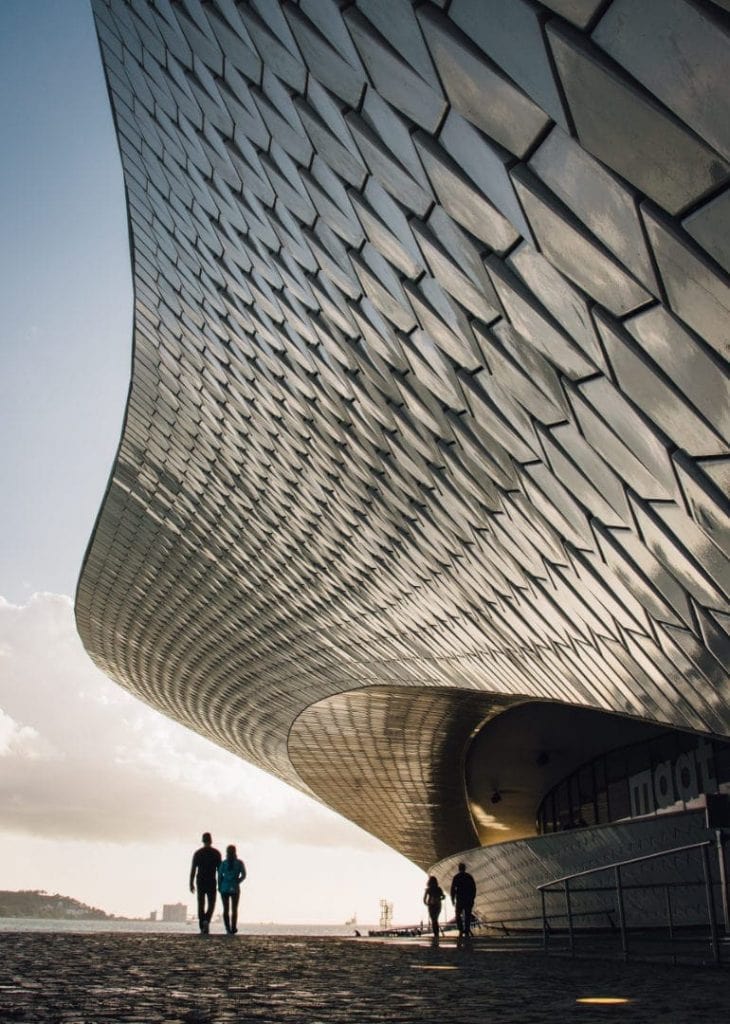
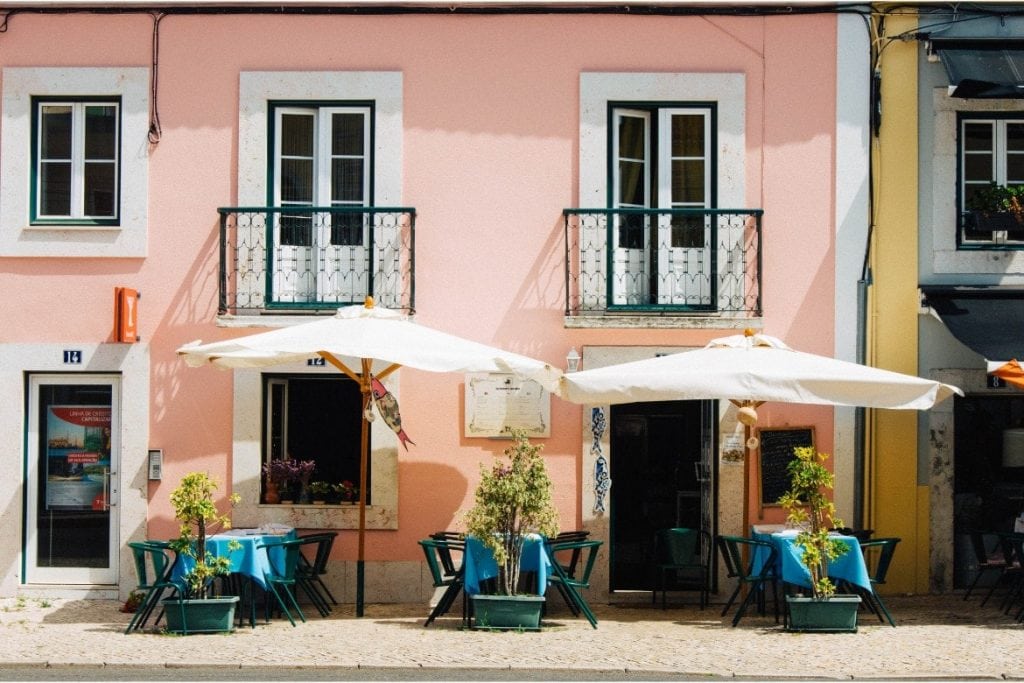
Praça do Comércio and Augusta Street
Although a bit cliché, these are places not to be missed. There, you will find the Lisboa Story Centre, which tells the city’s history, and the Café Martinho da Arcada, where the poet Fernando Pessoa used to visit. Walking a little further, you will find the Arco da Augusta and the Santa Justa Elevator.
Museums
There is a museum for each taste in Lisbon. From art galleries, with the Berardo Collection and the Calouste Gulbenkian to cultural ones, such as the Fado Museum and the Azulejo National (Tiles Museum). In the “newly opened” series, you find the modern and technological Money Museum and the must-visit Museum of Art, Architecture and Technology.
Bairro dos Descobrimentos (Discoveries)
Belém is the region to check out several “mandatory” items on your list. Start at the Belém Tower, walk along the Tagus river banks and arrive at the imposing Discoveries Monument. From there, you can walk to the Jerónimos Monastery and the Navy Museum. End the day by tasting the famous Pastel de Belém.
Houses of Fado
There is no way to leave Lisbon without stopping by a House of Fado. Most are 100% assembled for tourists, but some are outside the tourist routes and still retain the essence of Portuguese rhythm. Look for Parreirinha de Alfama, Tasca do Chico or Maria da Mouraria.
Shops and Bookstores
Lisbon is not really a shopper’s paradise, but if you look carefully, you can find selected items at reasonable prices. The Embaixada store occupies an old palace in Príncipe Real, with pieces of clothing and works from contemporary designers. The Vida Portuguesa rescues the traditional side of Portuguese culture. Their focus is on retro products, which pay homage to the country’s artisan work. Passing Bertrand, you will have the opportunity to visit one of the oldest bookstores in the world.
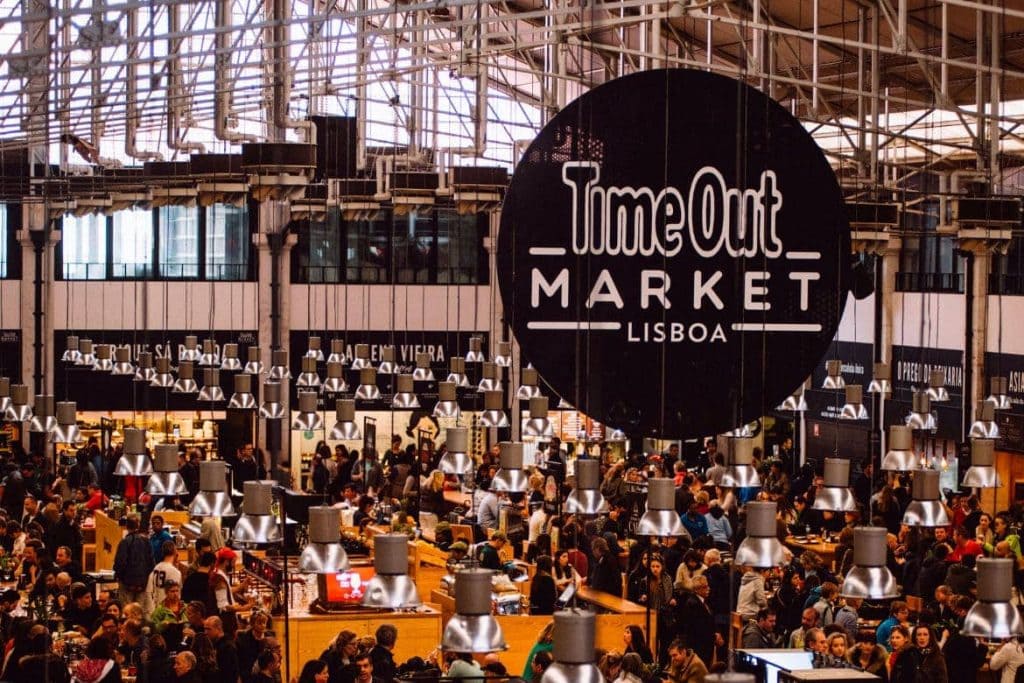
Time Out Market
The Ribeira Market has undergone changes and today functions as a large food court. The Time Out Market brings together dozens of kiosks, serving smaller (and cheaper) portions of recipes from renowned chefs. Something similar happened with the old Companhia de Fiação e Tecidos Lisbonense. A few years ago, it underwent a retrofit, and today LxFactory operates a large complex of stores, restaurants, bars, and offices. If books are your thing, don’t miss the Alfarrabistas Fair, which occurs every Saturday in Chiado. Check out more about Lisbon’s Markets.
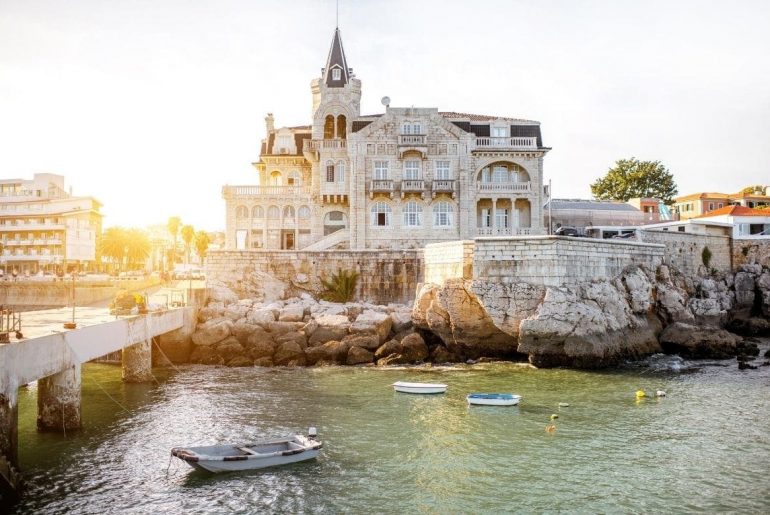
Day Trips: Sintra e Cascais
Once in Lisbon, go to Cais do Sodré station and take the train. In about 30 minutes, you will reach the coastal Cascais, with its clear water beaches and charming historic center. If your only goal is to take a swim and enjoy the local cuisine, one day is enough. To know about the city, it’s worth the stretch. Another option is Sintra, which is about 1 hour by train from Lisbon. It’s on the mountain’s side and was a getaway for great authors such as Eça de Queiroz and Lord Byron. Don’t leave without visiting the Moorish castle, the Pena Palace, and sampling local delicacies, such as the travesseiro and the queijada de Sintra.
Tip: If you are in a rush, you can visit both places with a guided tour.

Itinerary Ideas
Activities and tours
Book tours in Lisbon
Explore the region
Day trips from Lisbon
Before your trip
Get Inspired

Night Train to Lisbon
A thriller based on the best-seller book written by Pascal Mercier tells the story of a Swiss professor on a journey of discovery through Lisbon.
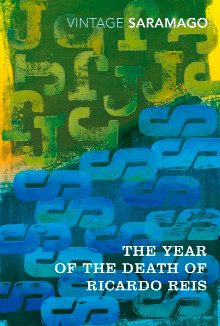
The Year of the Death of Ricardo Reis
Written by José Saramago, the book narrates the return of one of Fernando Pessoa’s heteronyms to Lisbon.

The Famous: Pastéis de Belém
Get to know the history of Portugal’s most famous delicacy in this Secret Lisbon video.


